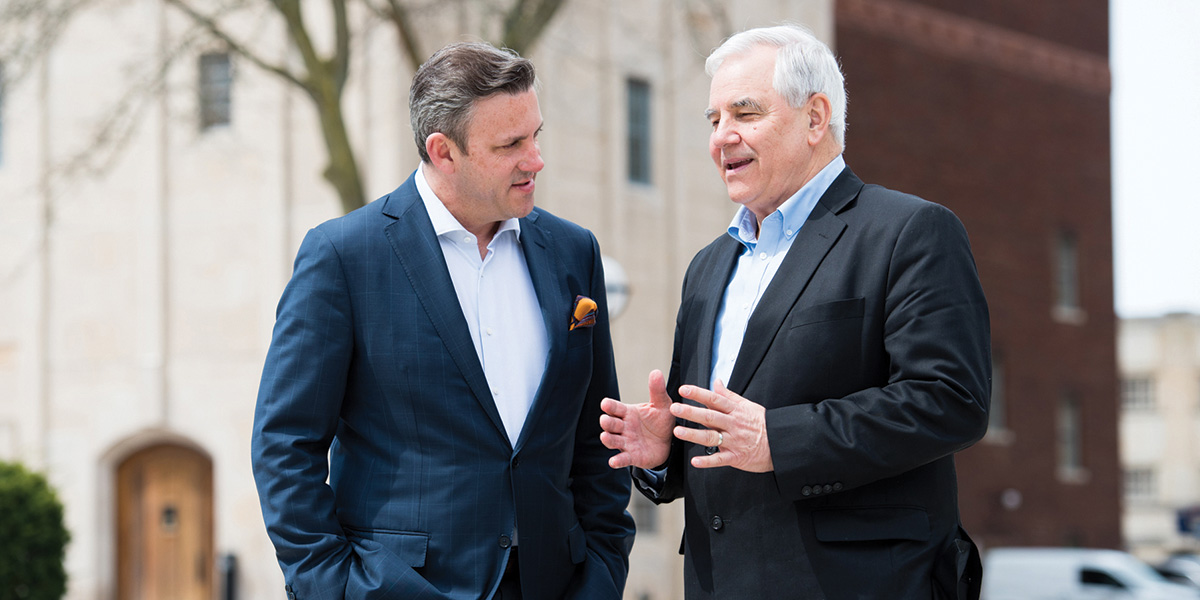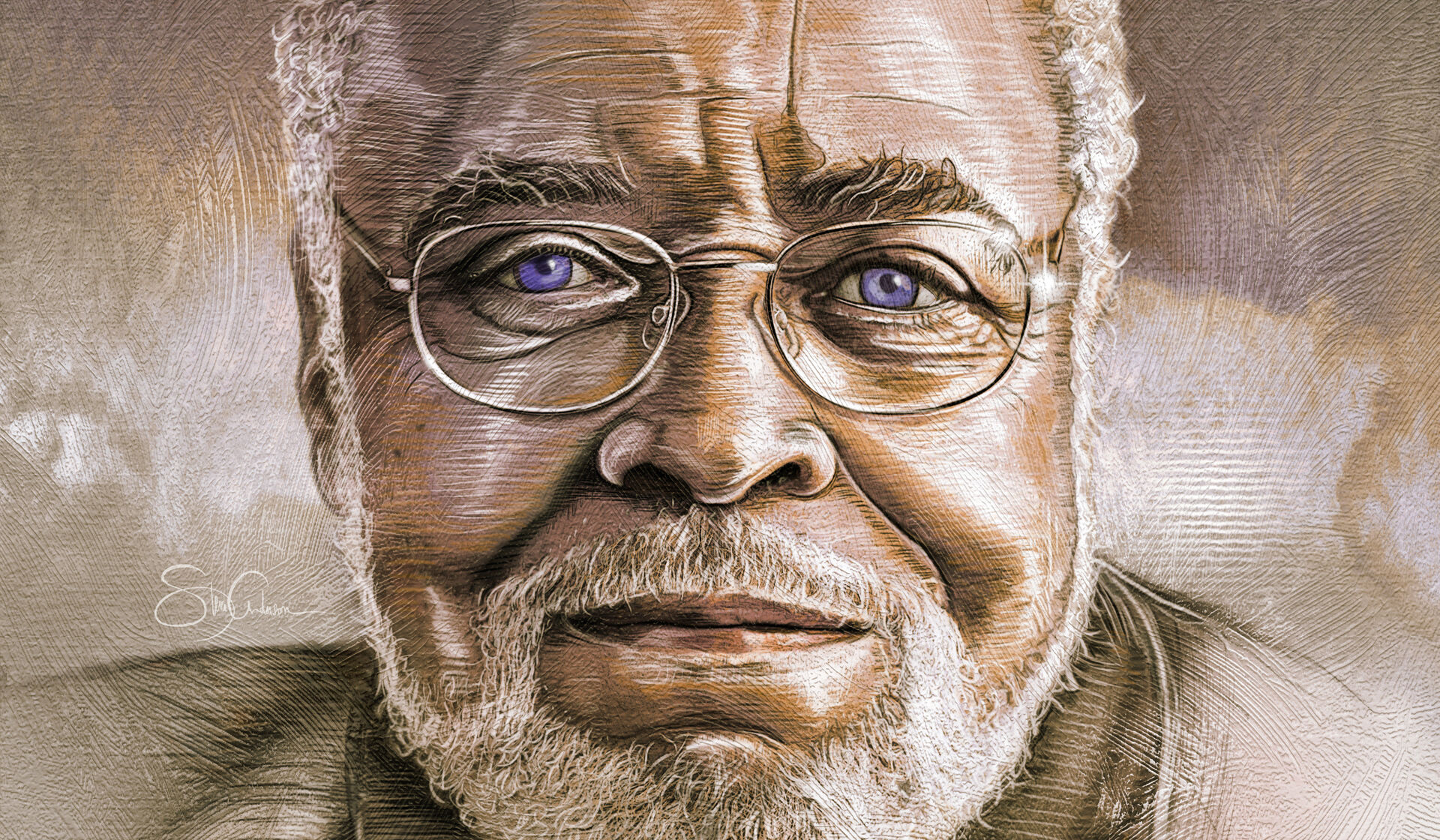You two first met in 2011, not in the hallowed halls of Hill Auditorium or Lincoln Center, but at the Ross School of Business. How did that happen?
Kenneth Fischer: I was chairing the board of National Arts Strategies, and we had just gotten some money to identify 100 of the top CEOs of cultural and arts organizations around the world. In that class was Matthew VanBesien, who at the time was running the Melbourne Orchestra.
Matthew VanBesien: I think I won the award for coming from the farthest away. I had never been to the University before, and coming to Ross with all these great colleagues and meeting Ken made an unbelievable impression. Ken and I made a connection immediately. I knew all about UMS. And I know his brother (Norman Fischer, a cellist), who teaches at Rice in Houston, where I used to live. Ken took me on a late-night, rogue tour of literally every performance venue on campus. It was so clear what a special place this was.
KF: It helps to have a key to them. We went to the top of Burton Tower, but I don’t think we played the carillon as it was 11:30 at night. We also both attended Interlochen (Center for the Arts), and we are both French horn players. It’s a special bond because it’s a tough instrument and we have all played and botched a big solo at one time or another.
MVB: It’s an instant camaraderie and a commiseration, if you will.
Another bond between you two is the creation of the UMS-New York Philharmonic residency program.
MVB: I was here in 2013, not too long after I started at the Philharmonic. They had been coming and performing at Hill since 1916, which was before they had gone to Europe or toured anywhere internationally. Ken took me to breakfast at Zingerman’s Roadhouse, and the wheels started turning. I told him about the orchestral initiatives we had started, particularly working with young musicians. We thought, “Let’s think about a way to have a regular presence for the New York Philharmonic here in Ann Arbor and then to build a lot of rich activity around the main stage concert.” So in 2015, we had the first residency, and we played three main-stage concerts with 36 important events around it at the music school and across the University.
KF: This fall, we have the second residency with the focus on Leonard Bernstein, the celebrated New York Philharmonic music director and composer who was born 100 years ago. Bernstein loved the Philharmonic and Ann Arbor. We have had a lot of fun planning this next residency, which is something we have been working on all year.
At the last residency, Philharmonic musicians played at the halftime show with the Michigan Marching Band. What did they think of that?
MVB: The brass players were thrilled to do it. I think there were about 1,000 musicians on the field between the Michigan Marching Band, the alumni band, and us. Our players in New York still talk about it. It was so memorable.
I hear it was during that halftime show that you started thinking about working at UMS?
MVB: I remember walking to the stadium in 2015 and Ken telling me he was thinking of stepping down. There’s no question in my mind that that sort of planted the seed.
KF: I just dropped that I would be hanging it up at the end of the 2017 season. I never believed that the guy who runs the New York Philharmonic would ever think of coming here. If that was a bug that was put into your ear, Matthew, I’m thrilled.
Matthew, tell us about your start in music.
MVB: Most of my youth was spent in small towns in the southern part of Illinois and Missouri. When I was 12, I saw a French horn at my school and thought, “That looks like something not too many people do.” I knew within six months of picking it up that this is what I wanted to do. After high school, I went to Interlochen and then to Indiana University. I remember that campus experience incredibly fondly. I have always felt the pull of an academic environment.
Right now, one of the biggest initiatives on campus is a strategic plan around diversity, equity, and inclusion. How do you see UMS fitting into that plan?
MVB: This is a subject matter that the arts is incredibly engaged in right now. UMS has made enormous strides already in terms of the performers who are on stage. You can talk about audience development and engagement and going into communities, but the art and the performances that are actually on stage need to be representative as well. UMS is incredibly positioned to present work that fosters difficult conversations. You can do that with theater, dance, and music in a way that enriches but also stimulates.
KF: I am proud of a lot of things, but I am particularly proud that early in my tenure we got out of Burton Tower and into the communities of southeast Michigan. We built relationships with K-12 schools, with nonprofit organizations, and with other arts organizations. But we also made U-M a fantastic partner.
Matthew, you will now be working with dance and performance, not just music. What excites you most about that?
MVB: It is a much broader palette. This next generation of artists doesn’t see the barriers between art forms in the way artists have for the last 100 years. They collaborate across genres and disciplines all the time.
What do you hope to accomplish for UMS?
MVB: If there is a next step, and there always is in the arts, how do we take UMS to the next level and continue to evolve? How do we tie directly into the curriculum, history, and different facets of the University to help the arts and change the way young people think and approach the world? Not with a goal other than to broaden their worldview.
I think we are in a period right now in our own history, where—as arts organizations and presenters—we don’t just have an opportunity, but a responsibility, to sail into the wind a little bit on certain issues. It’s not about telling people what is right or wrong, but about nurturing dialogue.
KF: One more piece of advice, Matthew. Wear something with a “Block M.” I wear the ball cap. It is an easy identifier all over the world. And how’s your “Go Blue!”?
MVB: Go Blue!
KF: That’s good. But maybe a little faster next time.
Jennifer Conlin, ’83, is the deputy editor of Michigan Alumnus.





